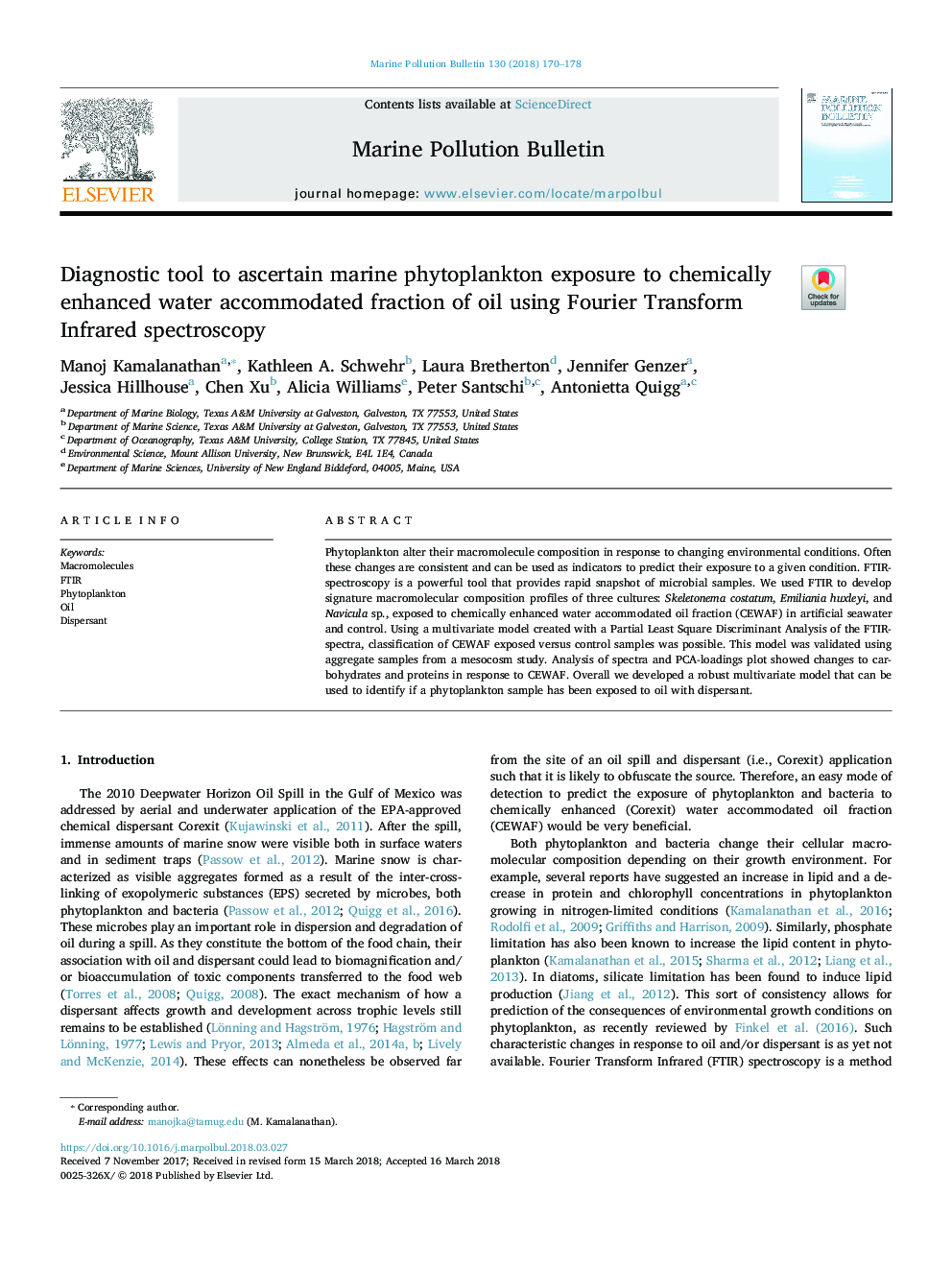| Article ID | Journal | Published Year | Pages | File Type |
|---|---|---|---|---|
| 8871209 | Marine Pollution Bulletin | 2018 | 9 Pages |
Abstract
Phytoplankton alter their macromolecule composition in response to changing environmental conditions. Often these changes are consistent and can be used as indicators to predict their exposure to a given condition. FTIR-spectroscopy is a powerful tool that provides rapid snapshot of microbial samples. We used FTIR to develop signature macromolecular composition profiles of three cultures: Skeletonema costatum, Emiliania huxleyi, and Navicula sp., exposed to chemically enhanced water accommodated oil fraction (CEWAF) in artificial seawater and control. Using a multivariate model created with a Partial Least Square Discriminant Analysis of the FTIR-spectra, classification of CEWAF exposed versus control samples was possible. This model was validated using aggregate samples from a mesocosm study. Analysis of spectra and PCA-loadings plot showed changes to carbohydrates and proteins in response to CEWAF. Overall we developed a robust multivariate model that can be used to identify if a phytoplankton sample has been exposed to oil with dispersant.
Related Topics
Physical Sciences and Engineering
Earth and Planetary Sciences
Oceanography
Authors
Manoj Kamalanathan, Kathleen A. Schwehr, Laura Bretherton, Jennifer Genzer, Jessica Hillhouse, Chen Xu, Alicia Williams, Peter Santschi, Antonietta Quigg,
